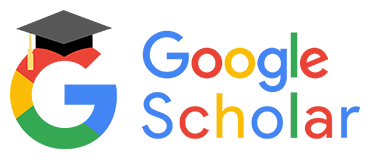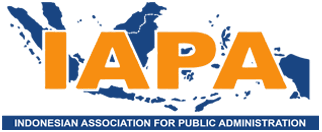Reaping or Losing Digital Dividend? The Use of Social Media for Enhancing Public Participation: A Literature Review
DOI:
https://doi.org/10.21776/ub.jpas.2020.005.02.8Keywords:
social media, digital dividend, public participationAbstract
The Internet has made social media a rapidly moving and vigorous domain and has changed the landscape for communications. It has changed different processes and engagement of human interaction and it is becoming hard to separate from people lives. The population of the internet and social media user are growing bigger every day, and so the opportunity for public participation. This study subsequently will identify of how government can take advantage of that digital dividend. To understand the issue, this research used a robust systematic literature review approach. The findings conclude that social media could help citizens to connect online and organize faster for collective action in order to put pressure when government performance does not meet people expectation.References
Anttiroiko, A. V. (2010). Innovation in democratic e-governance: Benefitting from Web 2.0 applications in the public sector. International Journal of Electronic Government Research , 6(2), 18-36
Bertot, J. C., Jaeger, P. T., & Hansen, D. (2012). The impact of polices on government social media usage: Issues, challenges, and recommendations. Government Information Quarterly. https://doi.org/10.1016/j.giq.2011.04.004
Bertot, J. C., Jaeger, P. T., Munson, S., & Glaisyer, T. (2010). Social media technology and government transparency. Computer. https://doi.org/10.1109/MC.2010.325
Chang, A. M., & Kannan, P. (2008). Leveraging Web 2.0 in government. EGovernment/Technology Series. Retrieved from http://wiki.douglasbastien.com/images/f/f7/IbmLeveraging_Web_2.0_in_Government.pdf. Accessed 2013-05-09.
Chetty, K., Aneja, U., Mishra, V., Gcora, N., Josie, J. (2018). Bridging the digital divide in the G20: skills for the new age. Economics: The Open-Access, Open-Assessment E-Journal, 12 (2018-24): 1–20. http://dx.doi.org/10.5018/economics-ejournal.ja.2018-24
Chun, S. A., & Luna Reyes, L. F. (2012). Social media in government. Government Information Quarterly. https://doi.org/10.1016/j.giq.2012.07.003
Criado, J. I., Sandoval-Almazan, R., & Gil-Garcia, J. R. (2013). Government innovation through social media. Government Information Quarterly. https://doi.org/10.1016/j.giq.2013.10.003
DiMaggio, P. J., & Powell, W. W. (1983). The Iron Cage Revisited: Institutional Isomorphism and Collective Rationality in Organizational Fields. American Sociological Review. https://doi.org/10.2307/2095101
DiMaggio, P., Hargittai, E., Neuman, W.R., Robinson, J.P. (2010). Social implications of the internet. Annu. Rev. Sociol. 27, 307-336.
Eggers, W.D., Bellman, J. The journey to government’s digital transformation. Deloitte University Press. http://dupress.com/articles/digital-transformation-in-government/
Fang, Z. (2002). E-Government in digital era: concept, practice, and development. Int. J. Comput. Internet Manag. 10(2), 1–22. http://unpan1.un.org/intradoc/groups/public/documents/apcity/unpan016377.pdf, http://www.ijcim.th.org/past_editions/2002V10N2/article1.pdf
Graham, M., & Avery, E. (2013). Government Public Relations and Social Media: An Analysis of the Perceptions and Trends of Social Media Use at the Local Government Level. Public Relations Journal.
Hadi, Aulia. (2018). Bridging Indonesia’s Digital Divide: Rural-Urban Linkages? Jurnal Ilmu Sosial dan Ilmu Politik Volume 22, Issue 1, July 2018 (17-33). ISSN 1410-4946.
Hansen, D. L., Shneiderman, B., Smith, M. A., & Hogan, B. (2011). Analyzing Social Media Networks with NodeXL. Analyzing Social Media Networks with NodeXL. https://doi.org/10.1016/B978-0-12-382229-1.00011-4
Hong, Hyehyun. (2013). Government Websites And Social Media’s Influence On Government-Public Relationships. Public Relations Review 39 (2013) 346–356. http://dx.doi.org/10.1016/j.pubrev.2013.07.007
Kemp, Simon. (2019). Digital 2019: Essential Insights Into How People Around The World Use The Internet, Mobile Devices, Social Media, And E-Commerce. Kepios Pte. Ltd., We Are Social Ltd. and Hootsuite Inc. https://datareportal.com
Martin, Allan. (2008). Digital literacy and the digital society. In: Lankshear, C., Knobel, M. (eds.) Digital literacies: concepts, policies and practices, vol. 30, pp. 151–176. Peter Lang, New York. ISBN 978-1-4331-0168-7. http://researchonline.jcu.edu.au/27788/1/27788_Lankshear_and_Knobel_2008.pdf
Mergel, I. (2012). The social media innovation challenge in the public sector. Information Polity: The International Journal of Government {&} Democracy in the Information Age. https://doi.org/10.3233/IP-2012-000281
Mergel, I. (2013a). A framework for interpreting social media interactions in the public sector. Government Information Quarterly http://dx.doi.org/10.1016/j.giq.2013.05.015
Mergel, I. (2013b). Social Media In The Public Sector: A Guide to Participation, Collaboration, and Transparency in the Networked World. San Francisco, CA: John Wiley & Sons, Inc.
Ministry of Communication and Informatics. (2017). Survey Penggunaan TIK 2017, Serta Implikasinya Terhadap Aspek Sosial Budaya Masyarakat. Research and Development of Human Resources Agency of the Ministry of Communication and Informatics.
Norris, P. (2001). Digital divide: Civic engagement, information poverty, and the internet worldwide. Cambridge: Cambridge University Press.
OECD, Organisation for Economic Co-operation and Development. (2001). Understanding the Digital Divide. OECD, Paris.
——— (2014). ‘Recommendation of the Council on Digital Government Strategies’, [online], available: http://www.oecd.org/gov/public-innovation/Recommendation-digital-government-strategies.pdf.
Osimo, D. (2008). Web 2.0 in government: Why and how. Joint Research Centre, European Commission: Institute for Prospective Technological Studies (IPTS). Retrieved from http://ftp.jrc.es/EURdoc/JRC45269.pdf
Pfeffer, J., & Salancik, G. R. (1978). The External Control of Organizations: A Resource Dependence Perspective. Harper and Row. https://doi.org/10.2307/2231527
Philip, L., Cottrill, C., Farrington, J., Williams, F., Ashmore, F. (2017). The digital divide: Patterns, policy and scenarios for connecting the ‘final few’ in rural communities across Great Britain. Journal of Rural Studies Volume 54, August 2017, p. 386-398. https://doi.org/10.1016/j.jrurstud.2016.12.002
Serrano-Cinca, C., Fuertes-Callén, Y., & Mar-Molinero, C. (2005). Measuring DEA efficiency in Internet companies. Decision Support Systems (Vol. 38). https://doi.org/10.1016/j.dss.2003.08.004
Sousa, Artur A., Agante, P., Gouveia, Luis B. (2013). Model of Digital Mediation for Direct Public Participation in Electoral Periods: How Important are the Media? ICEGOV '13 Proceedings of the 7th International Conference on Theory and Practice of Electronic Governance, p. 299-308. http://dx.doi.org/10.1145/2591888.2591942
Sparks, C. (2013). What is the 'digital divide' and why is it important? Javnost – the Public. J. Eur. Inst. Commun. Cult. 20 (2), 27e46. http://dx.doi.org/10.1080/13183222.2013.11009113.
UNDESA, UN Department of Economic and Social Affairs. (2012a). UNTT Report to the Secretary- General: Realizing the Future We Want For All, [Online], available: http://www.un.org/en/development/desa/policy/untaskteam_undf/
——— (2012b). ‘Promoting people’s empowerment in achieving poverty eradication, social integration and productive and decent work for all’, Report of the Expert Group Meeting, [Online], available: http://www.un.org/esa/socdev/csocd/2013/egm-empowerment-fnal.pdf.
——— (2013). DPADM Concept paper ‘Developing capacity for participatory governance through e-participation’, [online], available: http://workspace.unpan.org/sites/internet/Documents/CONCEPT%20PAPER%20e-Participation%2001.30.13.pdf
——— (2014). United Nations E-government Survey 2014: E-Government For the Future We Want. ISBN 978-92-1-123198-4. e-ISBN 978-92-1-056425-0. https://publicadministration.un.org/egovkb/en-us/Reports/UN-E-Government-Survey-2014
——— (2016). United Nations E-government Survey 2016: E-Government In Support Of Sustainable Development. United Nations, New York (2016). ISBN: 978-92-1-123205-9. eISBN: 978-92-1-058156-1.
Warschauer, M. (2003). Technology and social inclusion: rethinking the digital divide. Cambridge & Massachusets: the MIT Press.
World, B. (2016). World Development Report - Digital Dividends. The World Bank. https://doi.org/10.1017/CBO9781107415324.004
Zhao, F., Collier, A., Deng, H. (2014). A Multidimensional And Integrative Approach To Study Global Digital Divide And E-Government Development. Information Technology & People, Vol. 27 Iss 1 pp. 38 - 62.http://dx.doi.org/10.1108/ITP-01-2013-0022
Zinder, Evgeny and Yunatova, Irina. (2016). Synergy for Digital Transformation: Person’s Multiple Roles and Subject Domains Integration. In: Chugunov, Andrei V.; Bolgov, Radomir; Kabanov, Yury; Kampis, George; Wimmer, Maria (eds) Digital Transformation and Global Society, pp. 155-168. Springer. ISBN 978-3-319-49700-6.
Downloads
Published
Issue
Section
License
Copyright Statement
Authors who publish with JPAS agree to the following terms:
(1). Authors retain copyright and grant the journal right of first publication with the work simultaneously licensed under a Creative Commons Attribution License that allows others to share the work with an acknowledgement of the work's authorship and initial publication in this journal.
(2). Authors are able to enter into separate, additional contractual arrangements for the non-exclusive distribution of the journal's published version of the work (e.g., post it to an institutional repository or publish it in a book), with an acknowledgement of its initial publication in this journal.
(3). Authors are permitted and encouraged to post their work online (e.g., in institutional repositories or on their website) prior to and during the submission process, as it can lead to productive exchanges, as well as earlier and greater citation of published work (See The Effect of Open Access).
Permissions and reuse
For authors
Authors may use their own articles for the following non-commercial purposes without asking our permission (and subject only to acknowledging first publication in JPAS and giving a full reference or web link, as appropriate).
(1). Posting a pdf of their own article on their own personal or institutional website, for which no charge for access is made.
(2). Making a reasonable number of copies for personal or non commercial professional use.
This includes the contributors own teaching purposes.
(1). Republishing part or all of the article in a book or other publication edited by the author (except for multiple contributions in the same book or publication, for which permission needs to be sought.
(2). Using individual figures or tables or extracts of text (up to 300 words) in other publications published by a third party.
(3). Using the article in a course pack or compilation (whether paper or electronic) in the authors institution. This does not apply if a commercial charge is made for the compilation or training programme.
For third parties
All articles published by JPAS are published by default as open access.















